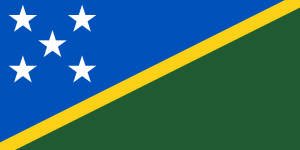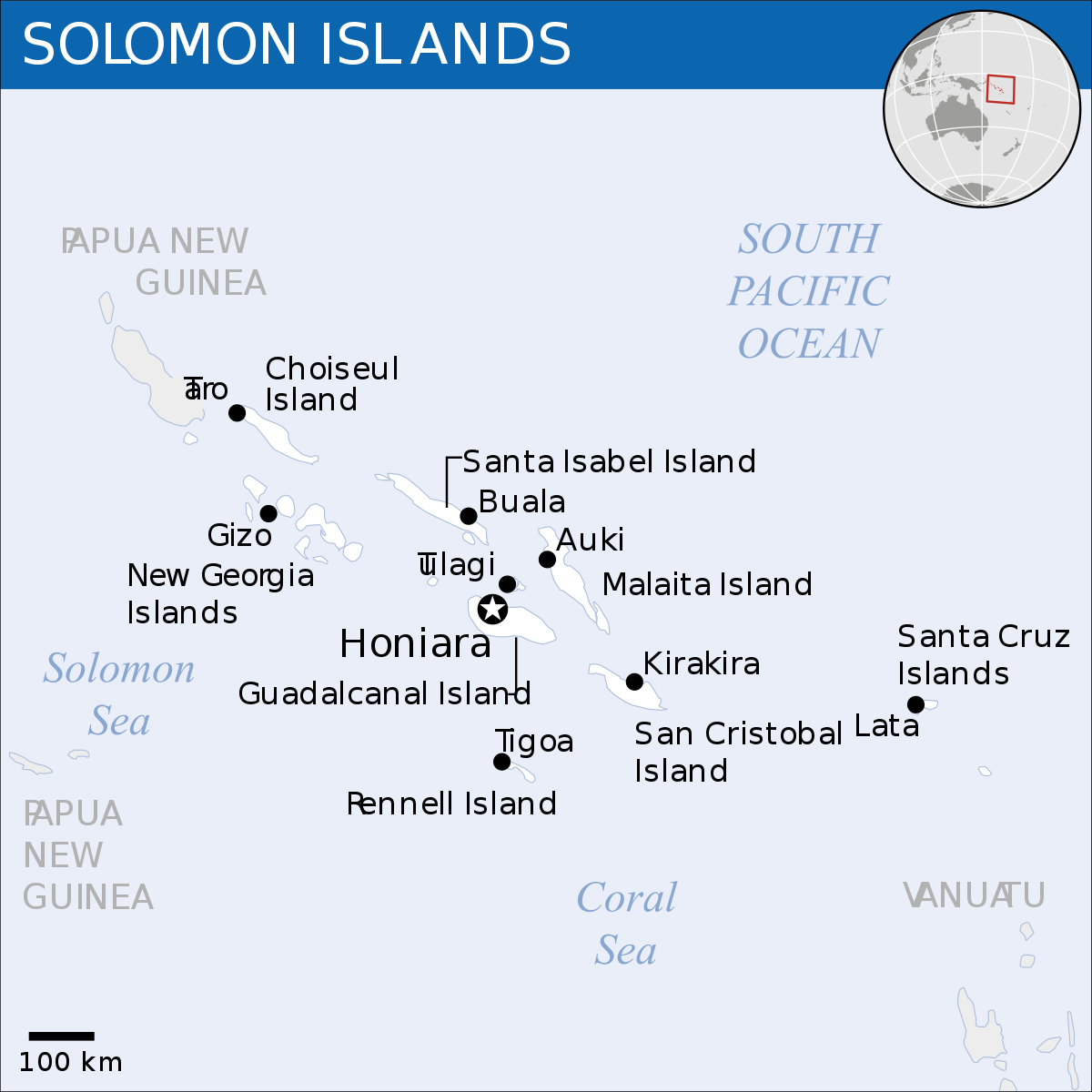
Solomon Islands
International Disaster Response Law in the Pacific
Overview

Legal Preparedness for International Assistance Assessment
1. Do the Solomon Islands have a clear legal framework for disaster risk management which includes procedures relating to international disaster assistance?
As stated above, the key DRM legislation in the Solomon Islands is the National Disaster Council Act 1989 which is supplemented by the National Disaster Management Plan 2018. These are further supplemented by legislation pertaining specifically to the provinces and climate change mitigation policy. Together these make up the legal framework for disaster risk management in the Solomon Islands.
This framework mostly pertains to DRM at a national and provincial level and makes limited reference to international disaster assistance in any detail. However, N-DOC is tasked with overall coordination of international assistance while the NEOC is given the responsibility for “external support issues for customs, exemptions, immigration etc through the Support/Admin Functional Team”. It is unclear what tools and legal powers are available for these functions to be exercised.
2. Do Solomon Islands laws and regulations clearly set out a focal point for coordinating international disaster assistance?
Although the NDM Plan 2018 states that the arrangements set out in the Plan acknowledge and provide for the receipt of relief and recovery assistance from international partners and relief agencies during and following a disaster, very few details are given. According to the Plan, donor and relief agencies are expected to establish their support mechanisms in association with their sector of activity, and are required to work within the structures of the Plan.
Overall coordination of international support during a disaster is to be exercised through the National Disaster Operations Committee and, following a disaster, through the Recovery Coordination Committee. The point of reference for donors, consular and international partners is MFAT. The previous DRM Plan 2010 states that beyond the immediate response phase, the RRC is expected to maintain relationships with international partners and support agencies and development mechanisms for engagement on recovery issues following a disaster. Following a disaster, they are to maintain engagement with international partners and support agencies for input to the Recovery Plan and funding proposal.
In addition to overall oversight and coordination by the NEOC, the 2018 Plan states that, during a disaster event, the activities of donor, consular and international partners shall be coordinated through the donor coordination mechanism currently convened by the Manager of the UN Joint Presence Office.
The 2018 Plan sets out that operational coordination of external humanitarian support during a disaster will be exercised through the regional Pacific Humanitarian Team and its IASC Cluster arrangements. The PHT will coordinate its connections through the N-DOC arrangements. Given that the PHT no longer exists it is not clear how this component of the plan will function.
The 2018 Plan establishes the Royal Solomon Islands Police Force as the civil/military focal point for foreign armed forces providing support to disaster situations.
3. Do Solomon Islands laws and regulations outline the roles and responsibilities of different institutions relating to international disaster assistance?
The NDM Plan 2018 sets out the roles and responsibilities of the Minister, Cabinet, National Disaster Council, the Council Committees, and the National Disaster Management Office.
The National Disaster Council is tasked with managing and coordinating international assistance, and the management of international, regional and bilateral support arrangements for DRM.
Broad responsibilities are established for all sectors generally, including clusters of agencies, the role of women, Partners, Red Cross, NGO’s, Civil Society, and the private sector. Despite describing in relative detail the roles and responsibilities of these institutions, international disaster assistance is mentioned only briefly in the plan.
4. Do Solomon Islands laws and regulations outline a process for requesting/welcoming offers of international disaster assistance, and for terminating international assistance?
Overall responsibility is given to Cabinet for decision making in relation to resources and accessing international assistance during disasters.
5. Do Solomon Islands laws and regulations provide for necessary legal facilities to be provided to international assisting actors?
Although there are no specific legislative provisions dealing with international assisting actors, the Immigration Act 2012 does allow the Minister to exempt any person they see fit from the requirement to hold a visa to enter or stay in the Solomon Islands.
There are no obvious elements in the legislative framework exempting aid items from either tax or customs duty.
However, the 2018 NDM Plan acknowledges the IDRL principles and states that their particular provisions (as regards immigration, entry conditions, customs and registrations) are to be included in SOP’s as appropriate.
6. Do Solomon Islands laws and regulations set out quality standards for international assisting actors?
There are no obvious quality standards for international assisting actors contained in the Solomon Island’s disaster risk management regulatory frameworks.
7. Do Solomon Islands laws and regulations set out eligibility requirements for international assisting actors to receive legal facilities?
Given that there are no evident provisions for international assisting actors to receive specific legal facilities, no eligibility requirements exist. However, the discretion does exist for the Minister to provide a visa exemption to any person.
8. Do Solomon Islands laws and regulations establish a specialised unit for expediting the entry of international disaster assistance?
The NDM plan provides for the National Disaster Council and its committees to oversee international assistance. The Cabinet also has final decision-making responsibilities regarding international assistance. The NEOC’s “Support/Admin Functional Team” is tasked with handled the practicalities of international assistance, including customs exemptions and immigration. However, the NDMP is vague on how this will be handled in practice and the extent to which the NEOC will be in position to address these issues. It simply states that the NEOC is to “manage donations, access funding through financial contingency warrants, maintain records, follow audit processes etc, and maintain external confidence through the Support/ Admin Functional Team.
9. Do Solomon Islands laws and regulations provide adequate transparency, safeguards and accountability mechanisms governing international disaster relief and initial recovery assistance?
The National Disaster Council Act 1989 states there shall be a fund called the National Disaster Council Fund, which includes all ‘moneys collected by way of donations, grants or contributions’. It goes on to state that all moneys of the Council not required for immediate use shall be invested in securities authorised under the provisions of any Act relating to trustees for the time being in force.
The Act also requires that the Council shall keep proper accounts and other records in respect of its operations and shall cause to be prepared a statement of accounts in respect of each financial year.
At a provincial level, the Provincial Secretary is to ensure appropriate funds are made available for relief efforts as a result of a State of Disaster, and is to fully account for all expenditure out of, and receipts into, the Provincial Fund.
10. Do Solomon Islands laws and regulations outline procedures for international disaster assistance sent from and transiting through the Solomon Islands?
The Solomon Islands’ regulatory frameworks for disaster risk management do not appear to make provision for cases where international assistance is sent from the Solomon Islands to another country, or for cases where international assistance transits through Solomon Islands territory.
Laws, policies, plans and other resources
-
National Disaster Council Act 1989
-
Provincial Government Act 1997
-
Emergency Powers Act 1999
-
Biosecurity Act 2013
-
Solomon Islands Independence Order 1978 (Assignment of Responsibility to the Minister for Environment Climate Change, Disaster Management and Meteorology 2011)
-
Solomon Islands National Disaster Management Plan 1997 (replaced by 2009 Plan)
-
National Adaption Programmes of Action 2008
-
National Disaster Risk Management Plan 2009 (replaced by 2018 Plan)
-
Honiara Urban Resilience and Climate Action Plan 2016
-
Solomon Islands Climate Change Policy 2012–2017
-
National Disaster Management Plan 2018
![]()

